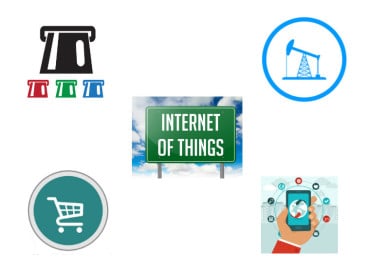
In this week’s real-time analytics news: MLCommons released the results of its latest machine learning benchmarking tests.
Keeping pace with news and developments in the real-time analytics and AI market can be a daunting task. Fortunately, we have you covered with a summary of the items our staff comes across each week. And if you prefer it in your inbox, sign up here!
MLCommons announced new results from its MLPerf Inference v4.0 benchmark suite, which delivers industry-standard machine learning (ML) system performance benchmarking in an architecture-neutral, representative, and reproducible manner.
The MLPerf Inference benchmark suite, which encompasses both data center and edge systems, is designed to measure how quickly hardware systems can run AI and ML models in a variety of deployment scenarios. The latest v4.0 suite includes over 8,500 performance results and 900 Power results from 23 submitting organizations, including ASUSTeK, Azure, Broadcom, Cisco, CTuning, Dell, Fujitsu, Giga Computing, Google, Hewlett Packard Enterprise, Intel, Intel Habana Labs, Juniper Networks, Krai, Lenovo, NVIDIA, Oracle, Qualcomm Technologies, Inc., Quanta Cloud Technology, Red Hat, Supermicro, SiMa, and Wiwynn.
To keep pace with today’s ever-changing generative AI landscape, the working group added two new benchmarks to the v4.0 suite. The Llama 2 70B model was chosen to represent the “larger” LLMs with 70 billion parameters, while Stable Diffusion XL was selected to represent text-to-image generative AI models.
To view the results for MLPerf Inference v4.0, visit the Datacenter and Edge results pages.
Real-time analytics news in brief
NVIDIA announced the general availability of NVIDIA AI Enterprise 5.0. The solution includes NVIDIA microservices, such as NVIDIA NIM to speed the deployment of generative AI applications, and NVIDIA cuOpt to solve complex routing problems and empower dynamic decision-making, NVIDIA AI Workbench to quickly create, test and customize pretrained generative AI models and LLMs on a PC or workstation and new infrastructure management enhancements. A complete list of what’s new in the 5.0 version can be found in the release notes.
Bigeye announced the availability of Bigeye Dependency Driven Monitoring. With this launch, Bigeye allows enterprise data teams to connect their analytics dashboards, map every dependency across modern and legacy data sources, and deploy targeted data observability to ensure they stay reliable by default. Bigeye Dependency Driven Monitoring solves common data observability challenges by combining enterprise-grade lineage technology with data observability to automatically trace the entire enterprise data pipeline at column-level precision through traditional and modern technologies, ETL stages, and even across the boundary from cloud to on-premises environments.
Appen Limited announced the launch of new platform capabilities that will support enterprises customizing large language models (LLMs). The solution supports internal teams who are attempting to leverage generative AI within the enterprise. Through a common and consistent process now available in Appen’s AI Data Platform, a user can move through the training of their LLM model(s) from use case to production.
Astronomer announced its latest Astro platform release with new features designed to allow users to accelerate innovation while achieving the highest levels of governance and compliance at scale. Specifically, the latest release will enable organizations to deploy faster, exercise greater operational efficiency, better address modern business requirements, and realize additional growth potential. New capabilities support governance at scale, enhanced security, and accelerated development cycles.
BrainBox AI announced the launch of a virtual building assistant, ARIA (Artificial Responsive Intelligent Assistant). Powered by the latest generative AI technology with Amazon Bedrock, ARIA is designed to enhance building efficiency by assimilating seamlessly into the day-to-day processes related to building management. Akin to the iconic relationship of Iron Man and Jarvis, ARIA offers technology and ingenuity to serve as the essential companion to facility managers.
CrateDB announced a new partnership with HiveMQ to offer a joint solution that collects large volumes of IoT data via MQTT and stores it in a highly scalable distributed time series database. The joint solution offers a data management architecture beyond pure time series, able to handle structured, semi-structured, and unstructured data while using standard protocols like MQTT and query languages like SQL.
Databricks announced the launch of DBRX, a general-purpose large language model (LLM) that outperforms all established open-source models on standard benchmarks. DBRX democratizes the training and tuning of custom, high-performing LLMs for every enterprise so they no longer need to rely on a small handful of closed models.
Dataiku and PwC announced a strategic alliance to enhance data and AI decision-making within regulated industries. The collaboration merges PwC’s expertise in AI, Cloud, Data and Analytics, and industry knowledge with Dataiku’s advanced analytics and AI (including Generative AI) capabilities. With Dataiku’s centralized and governed AI platform and PwC’s services, including its Responsible AI Framework, organizations can take advantage of advanced solutions to meet evolving needs in the age of AI.
DataStax announced an integration with Microsoft Semantic Kernel. The integration enables developers to more easily build RAG applications and vectorize data with Astra DB and Microsoft‘s ecosystem of AI products and copilots using Semantic Kernel’s open source SDK for AI applications and agents.
Domo announced the expansion of its partnership with Snowflake, including the launch of Domo’s Magic ETL capabilities on the Snowflake Data Cloud. The native integration with Snowflake is enhanced by the recent updates to Magic ETL, Domo’s drag-and-drop ETL functionality, giving users the ability to efficiently query and transform data directly on Snowflake’s platform using pushdown optimization, where data is processed on and not moved from Snowflake.
Dremio announced the general availability of Dremio Cloud on Microsoft Azure. This SaaS solution brings users closer to their data with lakehouse flexibility, scalability, and performance at a fraction of the cost of traditional data warehouses. Additionally, Dremio Cloud on Azure’s next-generation architecture puts security and infrastructure flexibility at the forefront. The architecture ensures that customers can control their data within their own Azure tenant, in storage services such as Azure Data Lake Storage (ADLS).
InterSystems announced it has expanded its IRIS Data Platform with vector search to support next-gen AI applications. Integration of vector search will make massive, disparate datasets easily searchable, especially for GenAI tasks related to natural language processing, text, or image analysis. For developers, this will make it easier for them to create more powerful GenAI applications on the IRIS platform.
IOTech announced the general availability of Edge Central version 3.1. This release is based on the third version of the Linux Foundation’s open-source edge data platform, EdgeX Foundry. As a commercialized version of EdgeX, IOTech Edge Central makes it easy to create, deploy, and manage edge systems without the risk of vendor lock-in. Enhanced features in EdgeX version 3.1 include common and simplified configuration of the EdgeX services, the loading of configuration files from a remote location via URI, and reducing the number of file formats used for EdgeX configuration.
Neo4j announced a collaboration with Microsoft to deliver a unified data offering that addresses critical data needs for Generative AI (GenAI). The collaboration will see Neo4j’s graph capabilities natively integrated into Microsoft Fabric and Microsoft Azure OpenAI Service to seamlessly combine structured and unstructured data and enable customers to uncover hidden patterns and relationships within their data for better insights and decision-making.
Opendatasoft launched its new Collibra connector, which integrates its Data Portal Solution with Collibra’s Data Intelligence Platform, helping organizations to scale data consumption while enforcing data governance and increasing trust. Available now on the Collibra Marketplace, the integration enables data assets to be imported seamlessly from the Collibra Data Intelligence Platform to the Opendatasoft data portal solution.
SIOS Technology Corp. announced the latest version of SIOS LifeKeeper for Linux, featuring a new Web Management Console that simplifies the way IT administrators deploy and manage high availability clusters used to protect critical applications such as SAP, HANA, Oracle, and others from downtime and disasters. The new offering features enhanced ease-of-use, set up progress tracking, self-help “information cues,” language localization, and more.
Solace announced that Qlik has selected Solace PubSub+ Platform to meet their solution’s real-time event distribution requirements. With PubSub+ Platform as part of their SaaS offering, Qlik can ensure a consistent, low-latency experience for their clients. Furthermore, migrating to PubSub+ will let them significantly scale while still meeting their latency requirement.
TaskUs and V7 announced a strategic partnership. The two companies are combining their expertise in AI and data annotation to optimize training data creation for AI product development at some of the world’s biggest technology companies. The integration of TaskUs’ teams of expert annotators, adeptly trained on V7’s latest AutoML stack for swift annotation and iteration looks to achieve rapid progression on all projects in a true human-in-the-loop approach.
Wind River announced that its Wind River Studio Developer offering is now available running on Amazon Web Services (AWS). Studio Developer is an edge-to-cloud, flexible, and open DevOps platform that enables higher developer productivity, operational quality, and efficiency, along with faster time-to-market. On AWS, Studio combines the scalability and collaboration of the cloud with a broad range of applications and interfaces required for lifecycle management.
If your company has real-time analytics news, send your announcements to ssalamone@rtinsights.com.
In case you missed it, here are our most recent previous weekly real-time analytics news roundups:
- Real-time Analytics News for the Week Ending March 23
- Real-time Analytics News for the Week Ending March 16
- Real-time Analytics News for the Week Ending March 9
- Real-time Analytics News for the Week Ending March 2
- Real-time Analytics News for the Week Ending February 24
- Real-time Analytics News for the Week Ending February 17
- Real-time Analytics News for the Week Ending February 10





























